In our May 19 Commentary, we shared commentary from Target’s CEO regarding the earnings and margin difficulties they were up against. Its May 18th earnings report and its CEO’s forward outlook brought Target’s stock down 25% in one day. The day prior, we discussed similar concerns by Walmart, the world’s largest retailer. In only a few weeks, Target is warning again that its expectations from a few weeks ago were too optimistic. On Tuesday, Target reported the following headlines:
- Profit Will Drop Because of Excess Inventory
- Target Will More Quickly to Unload Excess Inventory in Current Quarter
- Target Now Sees 2Q Operating Margin Rate in Range Around 2%
Target is now down about 25% since its first warning in May and 33% year to date. We remind you that Target’s concerns and those of other retailers are a stern warning that consumers are struggling. Given personal consumption is two-thirds of the economy, we should not take these messages lightly.
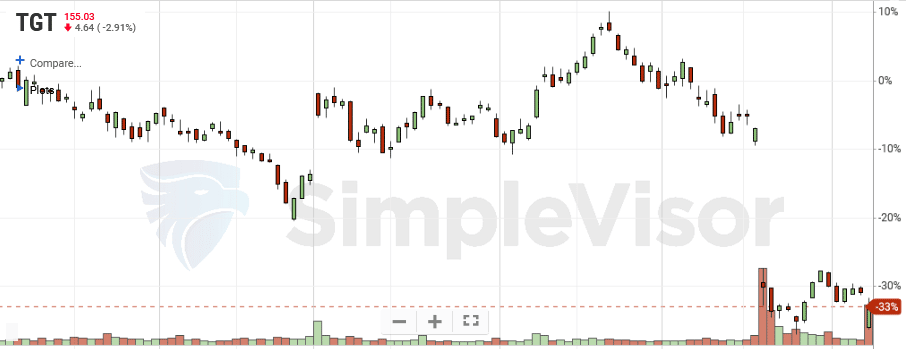

What To Watch Today
Economy
- 7:00 a.m. ET: MBA Mortgage Applications, week ended June 3 (-2.3% during prior week)
- 10:00 a.m. ET: Wholesale Trade Sales, month-over-month, April (1.7% during prior week)
- 10:00 a.m. ET: Wholesale Trade Inventories, month-over-month, April final (2.1% expected, 2.1% during prior week)
Earnings
Pre-market
- Campbell Soup (CPB) to report adjusted earnings of 62 cents on revenue of $2.05 billion
Post-market
- Five Below (FIVE) to report adjusted earnings of 59 cents on revenue of $654.33 million
Market Trading Update – Stuck In A Trading Range
The market rallied yesterday but remains stuck in a trading range that began last week. The bottoms from February and April continue to provide formidable resistance to any rally. Furthermore, the downtrend line from the January highs has now intersected the rally providing another level of resistance. We raised some additional cash yesterday and started building a short-market hedge position that we will add to if the market rallies to the 50-dma. Our stop on the hedge is currently 4250.
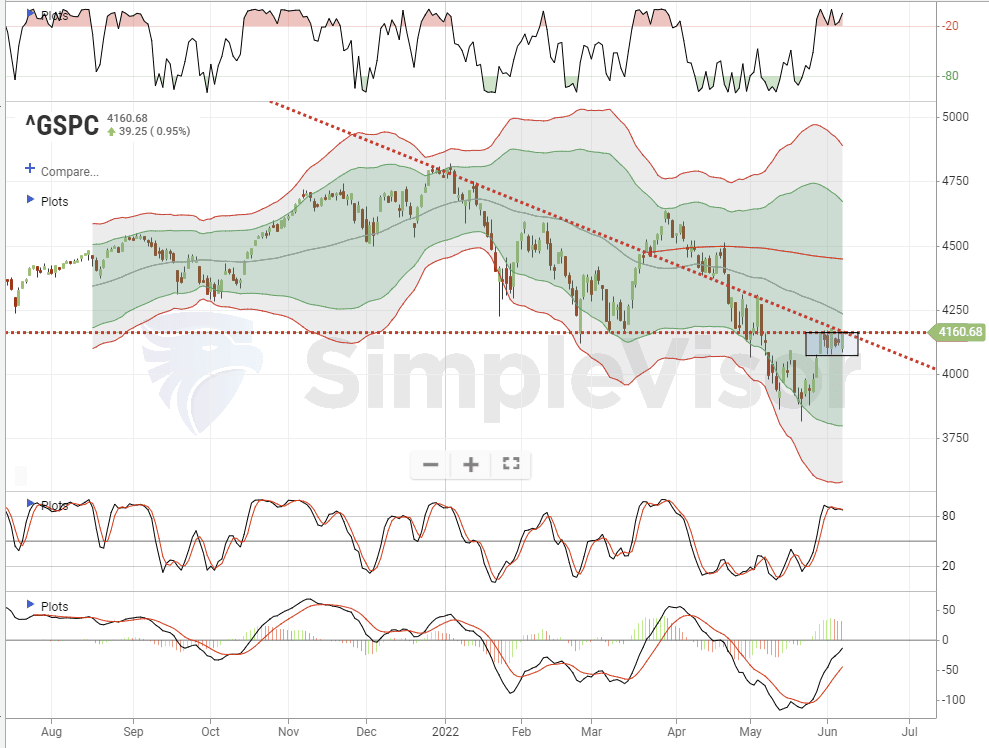
Net Short Positioning On Bonds And Decline Of Eurodollar Suggest Peak In Bonds
In the most recent Commitment of Traders report, non-commercial hedgers very short 10-year Treasury bonds and have started to cover those positions. As shown, when net short positions exceed 100,000 contracts, such usually marks the peak in interest rate increases.
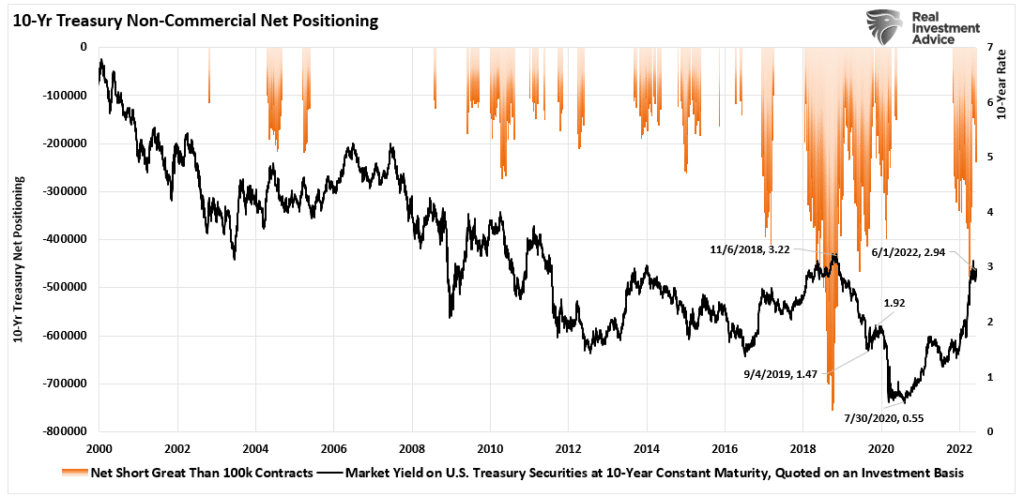
The peak is further confirmed by the massive decline in the Eurodollar. If the Eurodollar starts to strengthen such should also support higher bond prices and lower yields.
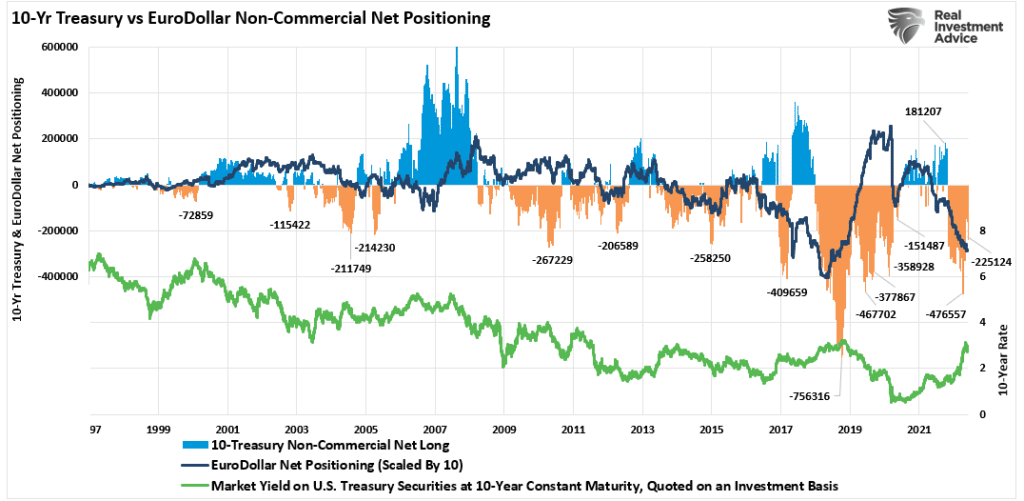
Atlanta Fed GDPNow Forecast Heads South
The Atlanta Fed’s GDPNow model only uses current data and excludes forecasts to arrive at an estimate for GDP. As shown below, the warnings from Target, Walmart, and others and what they indirectly say about consumers are showing up in the downward trending GDP forecast. Currently, the Fed’s model stands at 0.9% growth for Q2. Given that last quarter’s GDP was negative, and the Atlanta Fed is trending toward negative territory, the odds that we are entering a recession continue to grow.
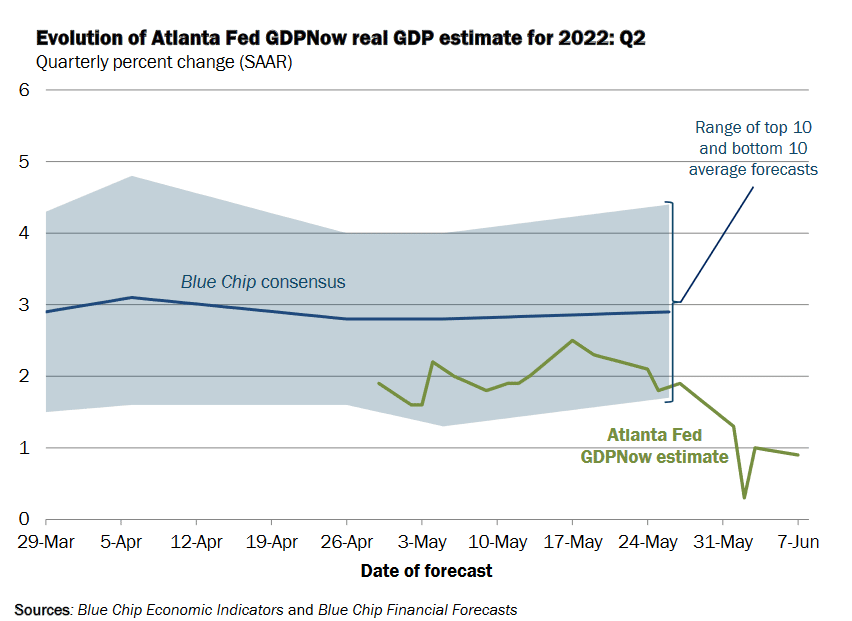
Auto Sales Outlook is Weak
The graph below from Teddy Vallee shows the strong correlation between the University of Michigan survey results about car purchases and auto sales. The Michigan survey tends to lead actual auto sales by about a year. High auto prices and declining real wages put auto consumers in a bind. Based on the survey, they think today is the worst time to buy a car in at least 40 years. Accordingly, if the correlation holds, auto sales should plummet over the next 12 months.
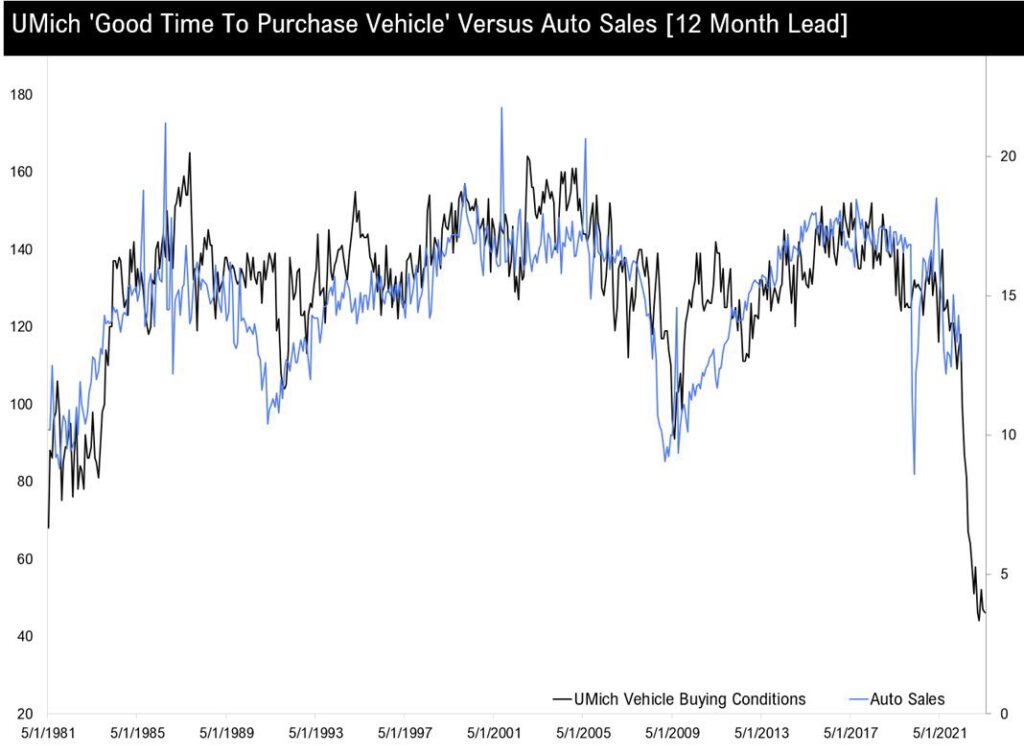
Home Payments are Unsustainable
The two BlackKnight graphs below help show how unsustainable home prices have become. The culprit is a function of the surge in mortgage rates and home prices. The first graph shows that the monthly mortgage payment required to purchase an average-priced home is almost $700 more than it stood before the pandemic. It also dwarfs the pre-housing crisis levels. The ratio of payment to income is approaching 35%, in line with the prior peak in 2006. More importantly, it is 15% above the post-financial crisis run rate of about 20%.
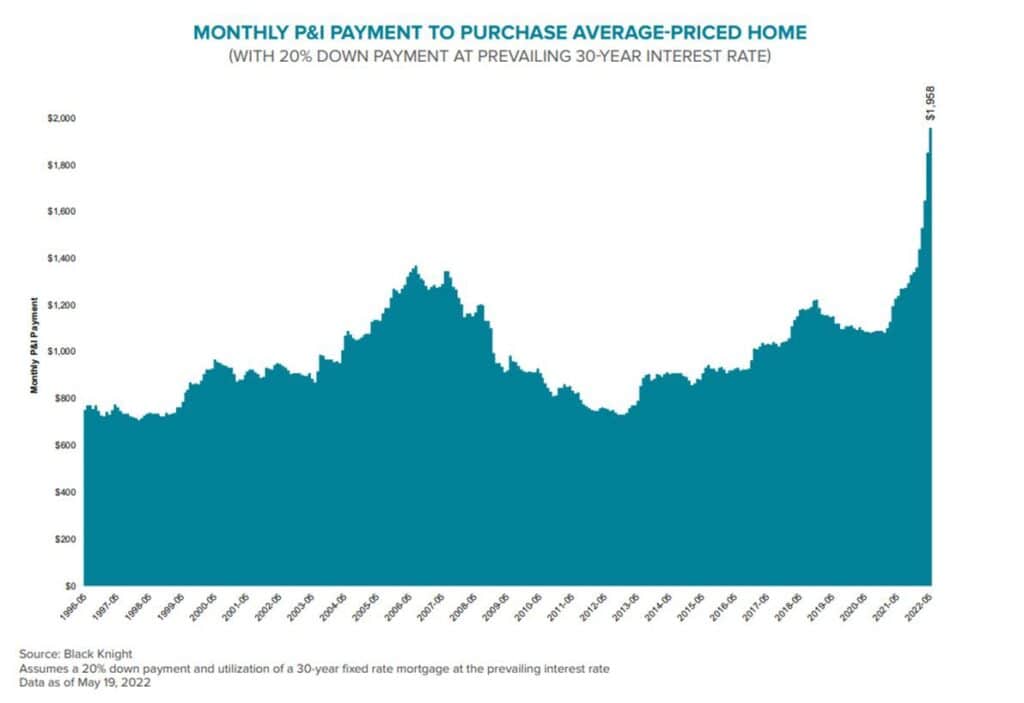

Please subscribe to the daily commentary to receive these updates every morning before the opening bell.
If you found this blog useful, please send it to someone else, share it on social media, or contact us to set up a meeting.


